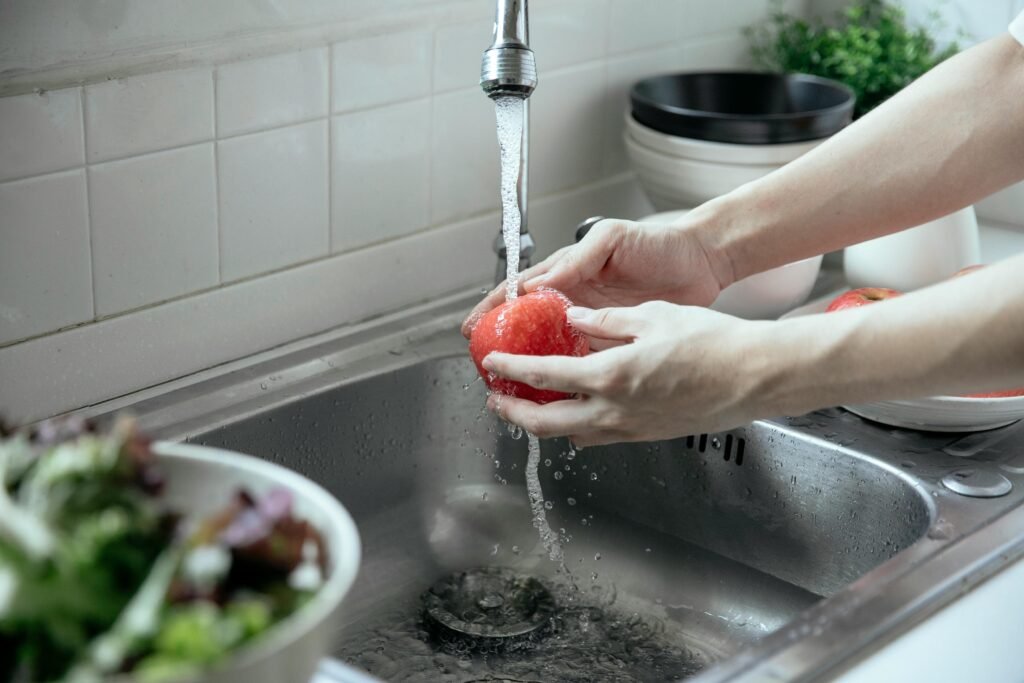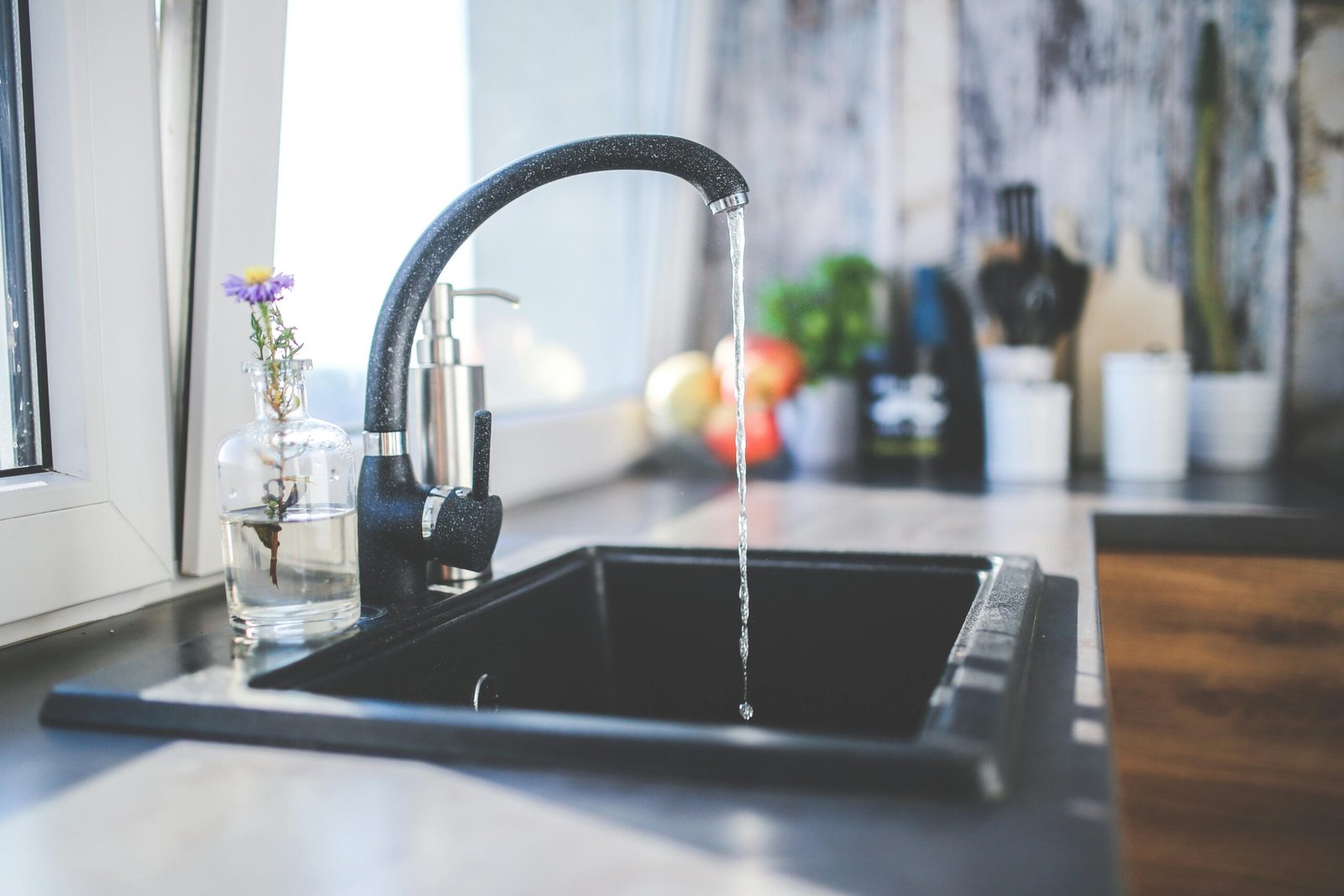One common discomfort that a kitchen sink may cause is when there is low water pressure the amount of water that flows through is often inadequate for someone who wants to fill a pot quickly or wash a dish. Interestingly, there are some fast fixes you can implement to solve the problem. This article seeks to enlighten the reader with the causes of low water pressure in the kitchen sink and how the problem can be solved.
Table of Contents

1. Check the Aerator
The aerator is a round, mesh disc mounted at the end of the faucet or, occasionally, as the final component of a longer spray head. Eventually, it gets blocked with deposits of Mineral and other materials thus posing a challenge of low water pressure. Here’s how to clean it: Here’s how to clean it:
- Remove the Aerator: Take off the aerator fitting by turning it clockwise if you have installed it. You will only require a pair of pliers and it is recommended to cover the aerator with a cloth, or the surface might be scratched.
- Clean the Aerator: Take off the aerator and wash it under running water: One needs to use a brush and clean the debris that accumulates in the aerator. Rinse the dishes in running water for a few hours to weaken the deposits of minerals.
- Reassemble and Reattach:To maintain the aerator’s cleanliness, it should be taken off and then screwed back onto the faucet after reassembling it.
2. Check for Leaks

Low water pressure is significantly caused by leakage in the building’s plumbing. Inspect the pipes under your sink for any signs of leakage: Inspect the pipes under your sink for any signs of leakage:
- Visual Inspection:Some signs are tarnished, mold, dampness, or water stains on the base of walls and around the sink area.
- Tighten Connections:You employ a wrench to tighten any loose connections that you may find. It may also be necessary to replace a pipe that has been destroyed It may be necessary to pull out the pipe.
3. Inspect the Shut-off Valves
These are components where plumbing shuts off the water supply to the faucet. If they are not fully open, it can result in low water pressure:
- Turn off the Water Supply: These shut-off valves are usually mounted just under the sink to facilitate their use easily.
- Turn the Valves: In this step, one has to guarantee that the hot and cold water valves are open to the maximum level, something that can easily be done by turning the valves anti-clockwise.
4. Flush the Water Lines
This is because accumulation of sediments may occur at the interior surface of the pipes hence limiting the flow rate of water low pressure. Flushing the lines can help: Flushing the lines can help:
- Turn off the Water Supply:Turn off the nearby water supply to the kitchen sink; ensure it is completely closed.
- Disconnect the Supply Lines:Turn off the water supply by using the wrench to shut the water supply lines coming from the faucet.
- Flush the Lines:Put the supply lines in a bucket and open the water for a few seconds again until the water clears the debris.
- Reconnect the Lines:After that, join the supply line and turn the supply back on.
5. Replace the Cartridge
If you have a tap in your kitchen that only has one handle, there is likely a cartridge that regulates water flow. Over time, the cartridge can become clogged or worn out: Over time, the cartridge can become clogged or worn out:
- Turn off the Water Supply: Now turn off the main water supply to the faucet if it is connected to the water supply system.
- Remove the Handle: Follow the manufacturer’s instructions to remove the faucet handle.
- Extract the Cartridge: The cartridge should be removed from the faucet and for this purpose one needs to use pliers.
- Install the New Cartridge: Put in a new cartridge and tighten the faucet back into place.
6. Check for Water Pressure Issues in the Main Line
If the above steps don’t resolve the issue, the problem might be with the main water line: If the above steps don’t resolve the issue, the problem might be with the main water line:
- Test Other Faucets: Find out if the other faucets in the home are providing low water pressure or not. If they are, then the problem may be either with the main water line or your source of water supply.
- Contact Your Water Supplier: If you think there is a problem with more consumers in your area, please contact the water supplier.
Final Thoughts
In the matter of low water pressure in the kitchen sink, one possible difficulty can be with the stigma of your kitchen sink’s aerator and another problem may be related to the main water line. By implementing these three fast steps, the root of the issue may often be realized and solved by the user himself. However, if the problem can be felt to be severe then it may be advisable to consult the services of a qualified plumber to check the efficient running of the plumbing system.
Remember, this means that constant checkups of your kitchen faucet and the plumbing system can help avoid potential water pressure problems, and thus, more woes to your kitchen.

I really glad to find this website on bing, just what I was searching for : D besides saved to fav.